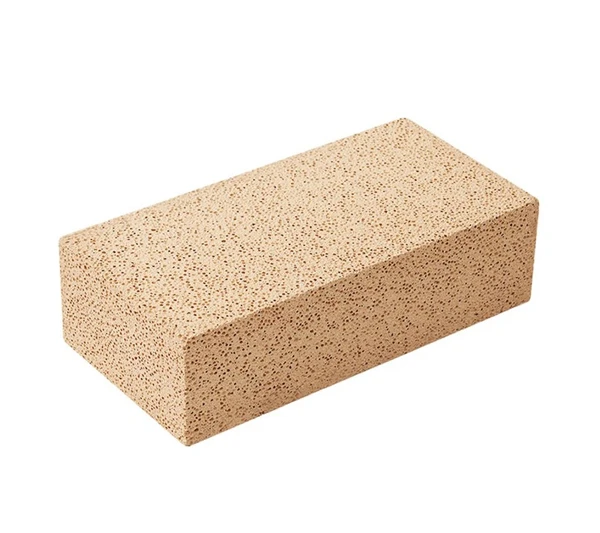
Parameters of High Alumina Insulation Bricks
| Item/Grade | LG140-1.2 | LG140-1.0 | LG140-0.8L |
|---|---|---|---|
| Al2O3, % | ≥48 | ||
| Fe2O3, /% | ≤2 | ||
| Bulk Density, g/cm³ | ≤1.2 | ≤1 | ≤0.8 |
| Cold Crushing Strength, MPa | ≥4.5 | ≥3.5 | ≥2.5 |
| Permanent Linear Change, % (T/℃*12h) | 1400 | 1350 | 1250 |
| -2~1.0 | |||
| Thermal Conductivity Coefficient, W/(m·K) Average Temperature (350±25℃) |
≤0.55 | ≤0.50 | ≤0.35 |
Alumina Lightweight Bricks
High alumina insulation bricks are a type of high-temperature insulation product made from high-quality alumina, clay, and other raw materials. Its main component is alumina, with a content of at least 48%. In addition, it also contains a small amount of iron oxide, calcium oxide, magnesium oxide, etc. Therefore, this insulation brick has comprehensive performance.
Advantages of High-alumina Insulation Bricks
High refractoriness: The refractoriness of high alumina insulation bricks is generally between 1580 and 1750°C. The refractoriness is higher than that of other insulating brick. This makes them suitable for use in high temperature environments.
Good thermal insulation performance: The thermal conductivity of high alumina insulation bricks is between 0.2 and 0.55 W/(m·K). The thermal conductivity is lower than that of clay insulation bricks and silica insulation bricks. This means that they have excellent thermal insulation properties.
Light weight: The density of alumina insulation bricks is between 0.5 and 1.2 g/cm³. This makes them lightweight and easy to handle. It improves construction quality.
High strength: The compressive strength of high alumina insulation bricks is between 1.0 and 2.0 MPa. This makes them strong and durable, with a long service life in high temperature mechanical applications.
Good chemical stability: Alumina has good chemical stability. This feature helps to resist corrosion from acidic and alkaline slags.